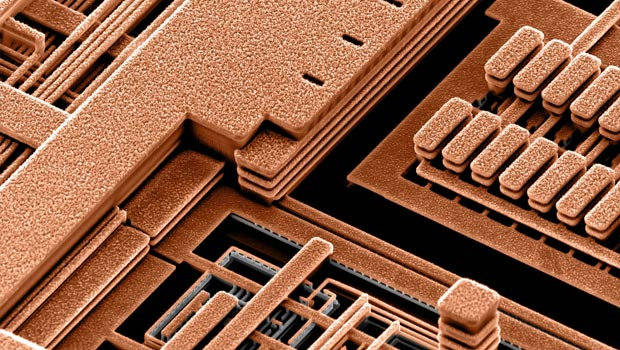Latest News
The Time to Enhance the U.S. Microelectronics’ Supply Chain is Now
February 26, 2021 By Zachary J. Lemnios and Terry Halvorsen When people think about technological advancements, they seem to generally consider consumer products and innovations, such as the...

February 26, 2021
By Zachary J. Lemnios and Terry Halvorsen
When people think about technological advancements, they seem to generally consider consumer products and innovations, such as the latest cellphone, tablet or the smallest portable computer. However, if we expand our focus to a broader view of technological innovation, there are common components in most of the technologies that we -- as individuals and as a nation -- depend on. Those less-talked-about components, called microelectronics, inside all electronics systems are essential to the performance of these products.
Also known as semiconductors, chips, and microchips, these microelectronics are at the core of most technological innovation and without them the existence of the most sophisticated systems would be impossible. Semiconductor innovation is complex, and advances are typically measured in terms of processing speed, power consumption and physical size. Equally important for both government and industry, given the current heightened cyber-threat environment, is the security of these components.
While manufacturing of microelectronics in the U.S. has reached an historic low, other countries have expanded their position in this industry. This shift has impacted the complex microelectronics global supply chain that, today, involves many countries around the world, but in many cases traces back to the Asia-Pacific region, where the outsourced aspects of the semiconductor production is heavily concentrated. According to a recent study, it’s projected that, by 2030, Asia will potentially control over 80% of the global semiconductor manufacturing supply, furthering U.S. reliance on foreign-made microelectronics.
To help address the important challenge of having secure microelectronics in the U.S., it’s necessary to secure and invest in the domestic supply chain – which includes research and development (R&D) to preserve leadership in innovation all the way through the latest cutting-edge manufacturing capabilities. Furthermore, we believe that integrating strong security protocols in U.S.-led R&D and in the manufacturing process of these components could enable the U.S. Federal Government’s secure use of foreign manufacturing.
IBM has been laying the foundation of an ecosystem to help secure and advance the U.S. microelectronics supply chain for years. Recently, an IBM-led team has demonstrated elements of said ecosystem to the U.S. Department of Defense (DoD) under its Rapid Assured Microelectronics Prototypes (RAMP) Advanced Commercial Capabilities Project. The result is a holistic ecosystem that adds security to the design and fabrication of microelectronics, partly through the implementation of a Quantitative Assurance (QA) Data approach that references the DoD ‘s QA Standards Framework.
The IBM-led ecosystem has been shaped with input from a key group of partners from the Defense Industrial Base (DIB), fabless design companies, universities, and small businesses to provide technical depth, deep State of the Art (SOTA) foundry relationships, proven experience in complex intellectual property (IP) licensing and support models, and a commitment to a sustainable long-term capability. To showcase this approach, IBM recently hosted a series of virtual conversations to delve into the details of this vision.
Ultimately, securing and investing in the future of the U.S. microelectronics’ supply chain is a challenge we need to address. The recent executive order from the Biden Administration is an encouraging step in the right direction. IBM is ready partner with industry leaders to apply talent and expertise to tackle this critical mission.

Zachary J. Lemnios
Vice President, IBM Research and Fmr. Asst. Sec. of Defense

Terry Halvorsen
General Manager, Client Development Leader, IBM U.S. Public and Federal Market and Fmr. CIO, Dept. of Defense.